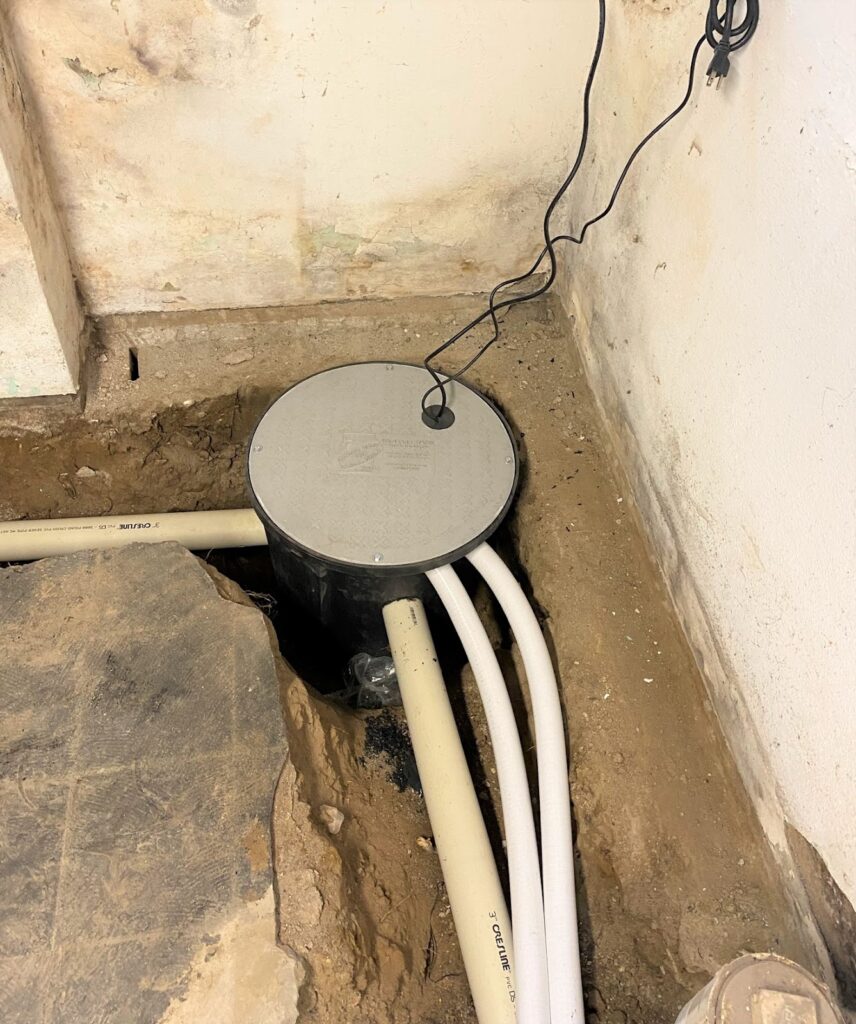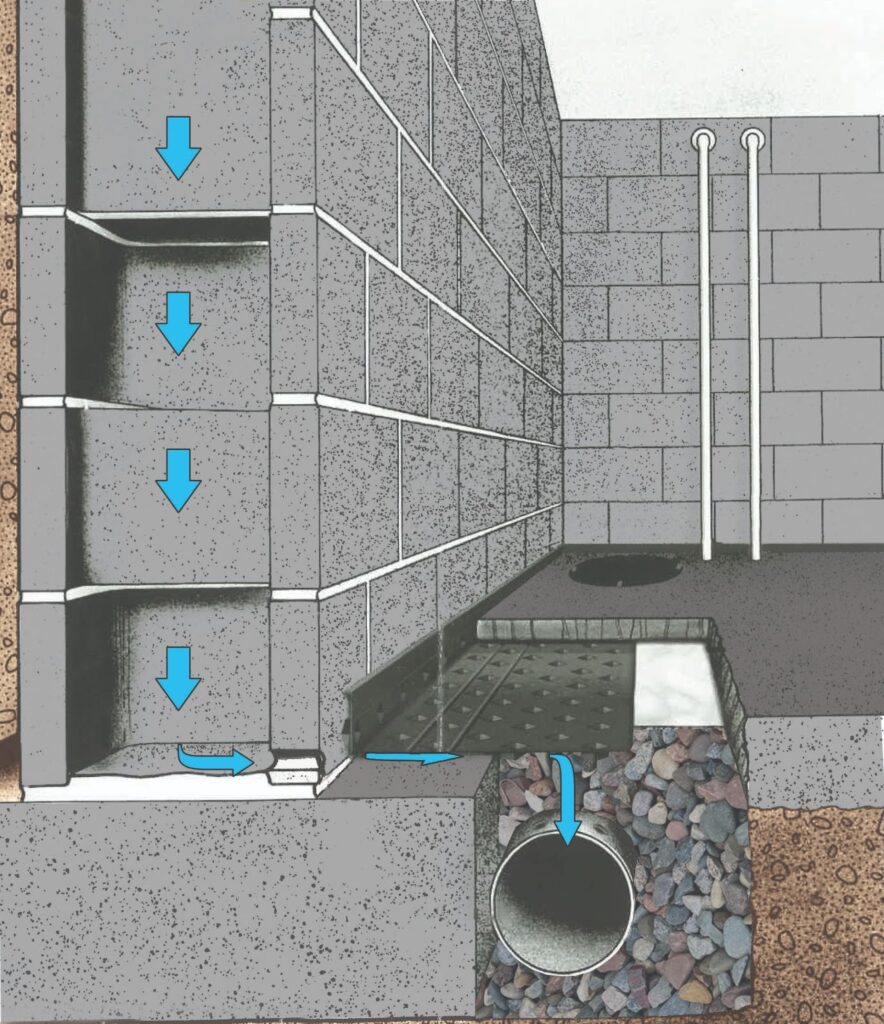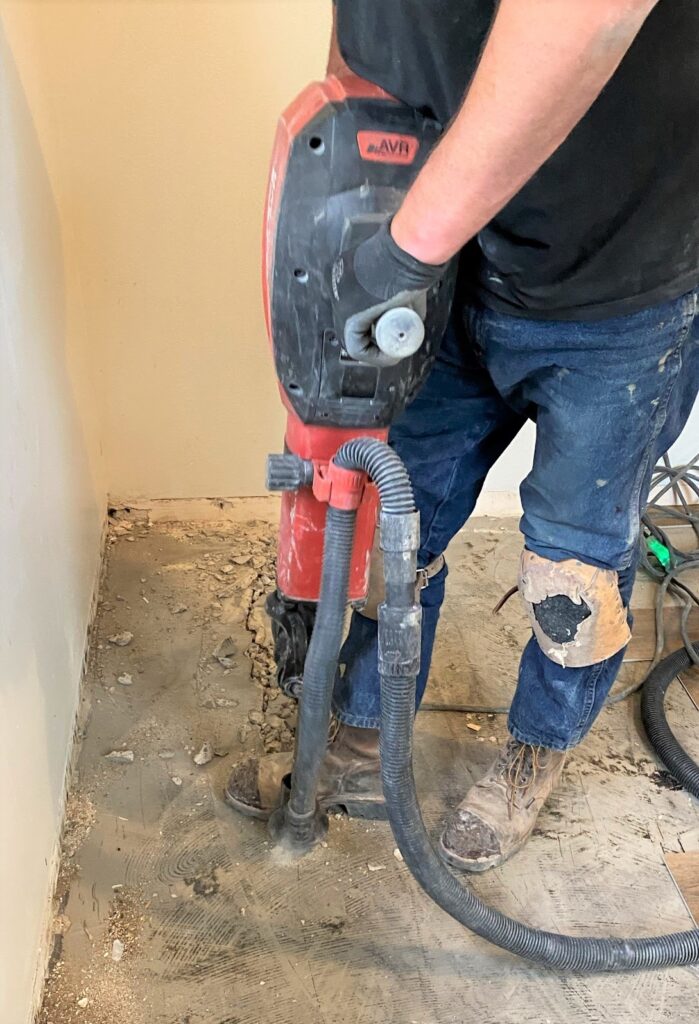
When waterproofing your basement, there are many questions to answer to identify the problem and if necessary, hire a contractor to provide the best solution. Before jumping to rigid PVC or another system, rule out simpler and cheaper solutions. Then move to exploring your drain tile options.
Standard Water Control has installed 1.6 million feet of drain tile systems in over 20,000 homes and businesses across Minnesota and western Wisconsin. You can’t provide effective, long-lasting solutions over 45 years and counting without establishing a reliable point-of-view.
Additionally, about 33% of our work is replacing inferior drain tile systems whose effectiveness lessens over time. Hopefully, you find this information helpful in understanding your options and the long-term benefits of a PVC drain tile system installed on the interior side of your basement.
What is Drain Tile Used For?

Drain tile is a system of pipes designed to keep water from entering your basement. The term “tile” is used because the original water drainage pipes were made from tiles of fired clay although clay is no longer used for installation. There are multiple options for drain tile today. However, before exploring those, you should confirm if your basement water problems can be solved by other means.
How Do You Know If You May Need Interior Drain Tile?
If you have water in your basement, answer these questions:
- Are your gutters and downspouts clean and functioning properly? Downspouts should extend at least 6 feet from the foundation wall.
- Is the soil around the foundation sloped away from your home? You want at least one inch of slope per foot for at least six away from your home.
- Is your sump pump functioning properly? If you have a sump pump, then you may already have drain tile, so the problem could be with the pump.
- If you have drain tile, is it collapsed or obstructed?
Is Interior Drain Tile better than Exterior Drain Tile?
Exterior drain tile can be effective for preventing water from entering the cement blocks but it needs to be installed before backfill, as in the case of new home construction. Installing around the perimeter of the basement, which requires digging down to the foundation after backfill, simply isn’t feasible. Other concerns are that exterior drain tile:
- Does not prevent water from seeping into a basement if a poured foundation wall cracks
- Is typically made of corrugated pipe and tends to clog
- Does not relieve hydrostatic pressure – which is the water entering the basement from below the basement floor due to water
Interior drain tile, on the hand, can be installed more easily in existing homes. It tends not to get clogged if it’s hard PVC installed next to the footer with washed rock by a professional basement waterproofing company. Finally, interior drain tile systems provide some relief for hydrostatic pressure. Some homes may require a trunkline across the basement and not just around the perimeter to further eliminate hydrostatic pressure.
An interior drain tile system controls the flow of water into the drain tile and sump pump, and is the preferred method in Minnesota and western Wisconsin.
What are the Different Drain Tile Installation Choices?
On top the Cement Floor by the Wall:
This is called a beaver system, and the piping is more like gutters off the side of the house that are glued to the top of the cement floor above the footing. This is one of the worst ways to install piping as it does not relieve hydrostatic pressure and is unsightly. Furthermore, holes are drilled into the cement block that do not always drain properly.
Below the Cement Floor and on top of the Footing:
This method also does not relieve hydrostatic pressure, and the piping sits flat on the footing so drainage is a problem as the water can be stuck in the piping. Sometimes contractors will need to install additional sump pump basins to fix the flawed system.
Below the Cement Floor and beside the Footing:
This is the best method – using a 3” hard PVC pipe laid into the trough that is filled in with washed rock and sloped to the basin. Holes are drilled into the bottom of the block which allows the water to flow over the footing, below the floor of the basement, and into the drain tile. Diamond Drainage Board is laid on top of the footing to ensure the water can easily move into the drain tile system.
Click here to watch a video on the University of MN Study on the topic and why this installation is best. This is also the method that Standard Water has used for decades, and while the installation is more difficult due to the need to remove more dirt and cement, it is certainly the best.
Type of Drain Tile: Corrugated vs. PVC
Corrugated Drain Pipe:
Drain tile waterproofing systems with corrugated pipe are some of the most common ones we replace. Corrugated pipe contains slits which are prone to calcifying with mineral deposits, Because of its flexibility, corrugated pipe is difficult to install at a constant slope and goes up-and-down in the trench like a roller coaster, causing water to pool at the low points. Excess water will also pool in the pipe’s corrugations. Some contractors install a smaller version of corrugated pipe that are stacked on top of each other to a degree, but these systems still tend to clog up and not move water as effectively due their size and design.
Rigid PVC Drain Tile:
At Standard Water Control, we install a rigid 3” PVC drain tile at a downward slope to the sump basin. Our pipe has holes too large for sediment to clog or calcify, which combined with the smoothness of the pipe, ensures a seamless water flow. Additionally, our drain tile sits on, and is covered with, washed rock that is far too large to fit into the drain tile’s holes, and acts as a filter for smaller elements that could infiltrate the tile. And because the PVC is rigid, it won’t break under the rock.
Summary of the Best Interior Drain Tile System to Install

There are plenty of drain tile systems to install. After you’ve confirmed you need one, it’s best to ensure the solution you pay for will be effective now and long into the future. For Standard Water Control, the drain tile that will bring you long-term peace of mind is rigid PVC tile installed below the slab.
